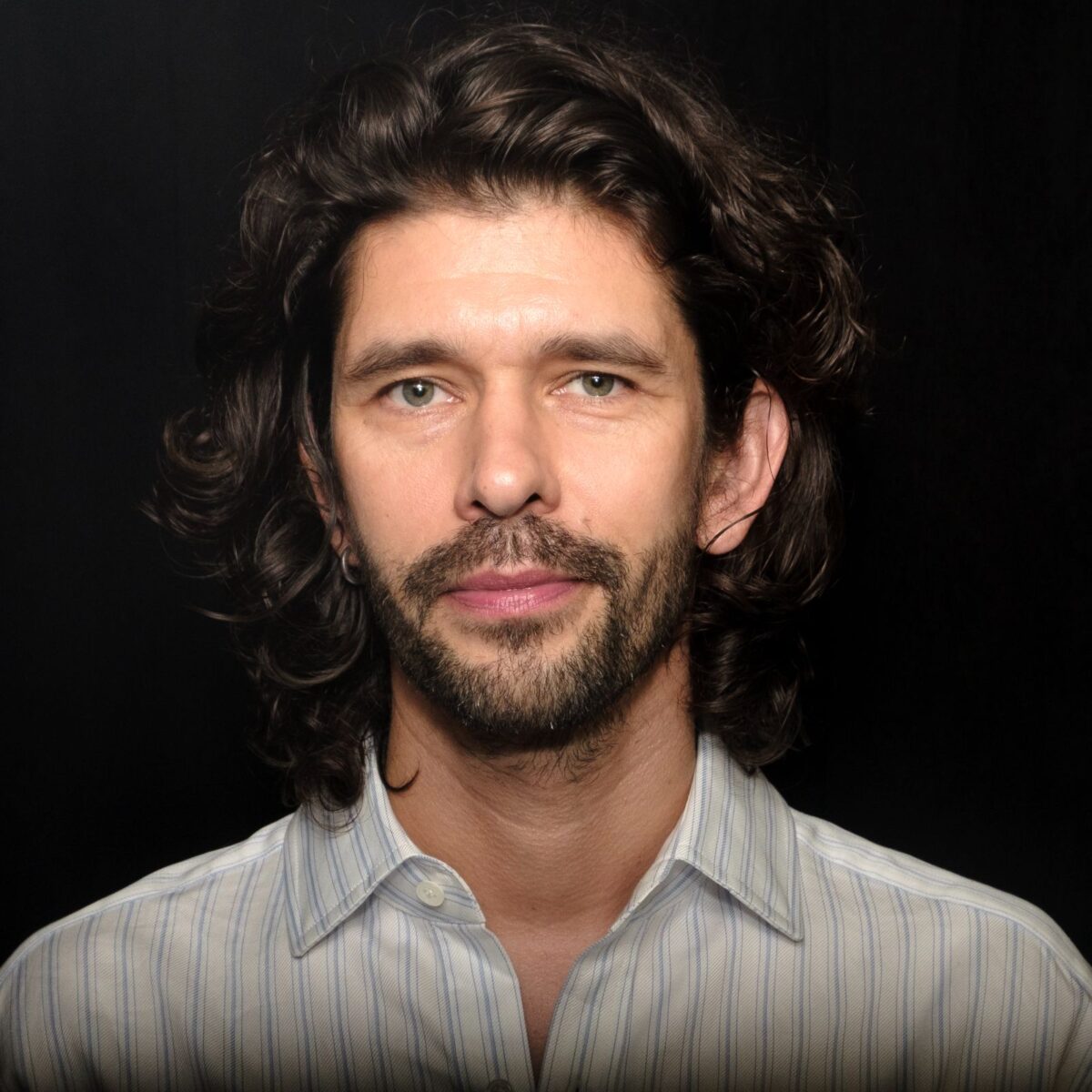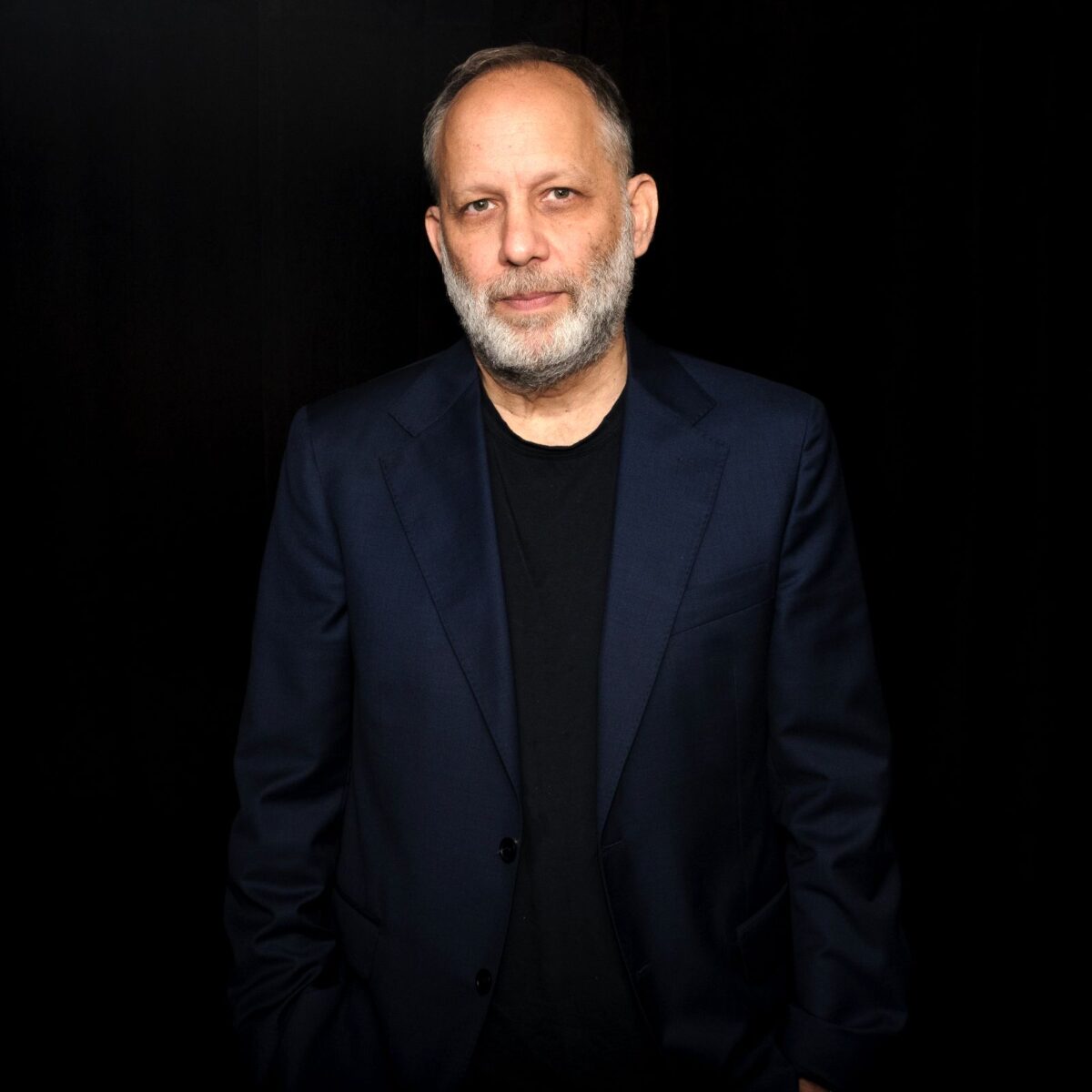
Admittedly, I hadn’t heard the name Peter Hujar before seeing writer-director Ira Sachs’ latest film, which captures a conversation between Hujar and his friend, Linda Rosenkrantz, about the former’s day in 1974. Ben Whishaw and Rebecca Hall are phenomenal as two friends chatting about art, money, New York, and all of the people they knew in the ‘70s. Peter Hujar’s Day, adapted from a transcript of Hujar talking to Rosenkrantz on a day in 1974 and published in a book in 2021, is a film of minimal setting, music, and scope. It’s made from two people talking, supposedly about the mundanity of the day-to-day, though the conversation reveals much more about the difficulty of making things, sustaining as an artist, and reckoning with the value and quality of one’s work.
Sachs stages Hujar (via Whishaw) as someone who’s constantly in motion: smoking, drinking, twittling, twitching. The English actor makes the film easy to watch, a treat for audiences to hear him speak about the artists, poets, and writers inhabiting the Lower East Side of 50 years gone. In particular, as he describes his day, he zeroes in on a photoshoot with Allen Ginsberg, and the difficulty he’s having in knowing if any of the photographs are “any good.” He talks to Rosenkrantz about the money he’s making and not making, the way he’s moving in and out of his day like a night of sleep, waking up and then resting intermittently. And Sachs puts him in the center of the frame––his face, his hands, his torso occupying the majority of the screen.
It’s an introduction––for many New Yorkers a reintroduction––to a photographer who should have gained more recognition. But in his modesty and honesty, he contains an immense relatability for any of those who have ever tried to make (and release) creative work. Whishaw shows this vulnerability in every scene, and Sachs puts the friends into different corners of this single apartment to give the audience changing perspectives.
Ahead of a release this Friday from Janus Films, I talked to Sachs about nostalgia, intimacy, and the loneliness in creating.
The Film Stage: You keep returning to shots of Peter and Linda in the center of the frame, each of their faces in the middle of the screen. Why did you focus on this specific composition?
Ira Sachs: What comes to mind is my Instagram account, because I have a personal Instagram account where I put images that I take. And what I find is that often I take an image and then I think that I can do better than this, and I should move the camera. But always the first one is best. The first one is almost 90% best. And I think, in general, it’s the most direct. If I put someone in the center of a frame, I also need to be wide enough that you sense the space. Space is always important to me, so I try to photograph the space with the person in it instead of a person in a space.
How did you come up with that idea?
Well, I think that space is the evocation of time and light and mood and feeling and of narrative. The space tells the story, not the person. You’re not lighting the person; you’re lighting the space. That’s just one way of looking at things. There are all different types of photography. But I was also interested in light, and what does light evoke emotionally for the audience and for the viewer. And so seeing Ben Whishaw and Rebecca Hall in daytime outside on a terrace overlooking New York City with certain sounds is very different from seeing the same two individuals on a bed at night with one lamp illuminating them. You can’t say that the text is what does that alone––it’s the evocation of light in a certain kind of space. All of that is information for the audience, [which] becomes a form of expression.
It’s a great New York movie without really setting foot outside of a single apartment building. How do you infuse the city into a single-location film?
Well, I think the text in itself is enough. Well, it’s not enough, but it was certainly one of the things that I loved about the text. It was so detailed, and it was like a photographic reproduction of New York at a certain time, based on this description by Peter of his day. I would be hard-pressed to find a better depiction of December 1974, Lower East Side than that text. I’m too lazy to be a documentary filmmaker, but I love the amount of detail and authenticity that a good documentary brings into the story. The time and place, and then how these individuals use that time and place. Peter’s day was small; it actually seems like a major replication of time.
Did you find yourself spending more time on the Lower East Side and going to these places because of it?
When I take my kids, when I drive them to school on the way home, I always pass by the corner of 2nd and 12th Street. Near the Village Cinema, where Peter lived, and on the second floor, you can see the windows of Peter’s apartment. If you know Peter’s work, you’ve seen self-portraits of Peter in his apartment with these two iconic arched windows in the corner. And so I see those every day. Vince Aletti still lives across the street––I’ve spent time in his apartment because of this movie––and Vince comes to visit Peter in the story and washes his hair and eats some Chinese food.
Do you think it’s odd that these places, like Peter’s apartment and these other places in the Lower East Side or East Village that have all this history, can become so commonplace, so easily walked-by?
That’s the nature of history, and everything is lost. I try not to be nostalgic, but I’m sad in New York that so few interiors are maintained. The Odeon becomes the oldest interior in New York City, and look at what that horrible man who goes unnamed did to the Plaza Hotel. It’s a history of people using money to destroy certain things. But how do you have these kinds of conversations without being nostalgic? The story of the city is the story of money, and that’s a story of violence to some extent.
Photos by Godlis, courtesy of the 63rd New York Film Festival
Do you feel like the film is nostalgic for a time and place in New York?
I don’t think so. I think it recognizes differences in certain things. And for me, it’s a reminder of the importance––particularly as an artist––of having people around instead of not around. I’ve been missing this bar, the Cedar Tavern, which was gone way before I got here. It was on University and 9th Street and was a haunt of the Abstract Expressionists as well as queer poets and lots of people who would go there on a nightly basis. I feel like we don’t have that anymore. I think that’s too bad for us because we live with our darkness and our worries and isolation. I don’t know, who’s the last artist you spent time with?
I don’t know. I have some friends who make art, but not sure how many of them call themselves artists.
I don’t mean specifically a visual artist; I just mean people who are trying to use their interior to express themselves in some external way. And that’s always risky. And what I love most about Peter’s text, which I only discovered when I finished the film, was how revealing he is about how hard it is to make things.
To that point: Peter keeps saying that he didn’t do anything during that day, even though it sounds productive, social, and so much more.
I have a feeling it was not an unusual day. It’s incredible because he was able to recall it and because he lived a really rich life openly. He had done the work that was necessary to create a community that supported him and that he supported and depended on and leaned into and trusted, including Linda. He had faith that Linda would be interested in what he had to say, which is something very beautiful.
Earlier, you used the word “small.” And I wanted to ask about making a film that’s more slight, just with two people talking. Even though it’s a film about larger ideas, like how difficult it is to make things.
I believe in the power of minimalism. Minimalism can be very maximum when done well. It’s either good to me or not good to me. And if it’s good to me, it will feel big. There’s a film called Before I Forget by Jacques Nolot; I really recommend this movie. It’s a monumental work with such a limited framework of what it’s trying to look at. I mean, Proust obviously––he’s massive. There’s beauty in the ability to describe in detail the experience of a moment. That’s all you got to do for me. To do that with intimacy and beauty is the challenge. I’m glad you said what you said about the film being about how difficult it is to make art; that, to me, only became the idea when I finished it and watched it again and thought about it and talked about it. It’s how I connect to it because I think Peter reveals how difficult it is to make art.
Why is that what you continually return to?
Because I feel really alone when I try to make art, and it’s really difficult and I want comfort from the idea that I’m not alone. I want to know that even the people that I consider great, that they too were filled with questions of worth and doubt and fear. I find that very comforting, the way poetry is comforting.
It doesn’t seem like Peter is complaining when he’s talking about this, or even when he’s talking about money. It’s more matter-of-fact.
You sense there is a worry. There are worries about money, about the future and legacy. But mostly the throughline is the worry about whether the photograph of Allen Ginsberg is good or not.
He keeps saying, “Oh, maybe there’s something in there. Maybe it’s okay.”
That is extremely familiar to me. I feel that I’m probably not alone in feeling those questions. I love that. And I love the modesty of that. I think there’s no arrogance. There is confidence, but there’s no arrogance. So he becomes a kind of role model which is to be open about your vulnerability, but also continue on with your abilities and your sense of self-worth and an understanding of your craft and your talent.
But do you think that humility would continue for Peter years later if he had more public success? Or even if he was talking to a bigger publication rather than his friend?
I do think that he doesn’t know how revealing he is. He’s not worried about him seeing himself as a character; he’s really lacking self-consciousness. He is the subject of a portrait, and he’s letting himself be that. That is really hard, for someone who’s used to being on the other side. Ultimately, this text makes me think Peter was also a performer, an actor. It’s a song and dance, which doesn’t mean it’s not authentic, but he’s really entertaining.
To that point: he’s always drinking, smoking, eating, and doing something with his hands.
In truth, he didn’t drink at all. I wanted him to do something in that kitchen. I said to Ben, “Pour yourself a Scotch.” And he’s like, “You know, Peter didn’t drink.” And I said, “Okay, I’ll take responsibility for that.”
All of that is fiction. Everything he’s doing with his hands, there’s no boiling the teapot. There’s never a sledgehammer outside a window that needs to be closed. He never runs out of cigarettes and has to walk to a door to pick up another pack of cigarettes. He never turns on a record player. All of that is fiction.
But is the idea just to create movement within the film?
It’s ultimately a nature of blocking and trying to figure out how to do a whole movie that would be filled with that kind of blocking. It turns out I could only come up with, like, ten things he could do in the course of an hour-and-a-half. I couldn’t do them every minute. So that’s why I ended up with these ellipses of time, because there’s no justification why he’s on a couch and then he’s on a terrace. The only justification is cinema, you know?
I assumed none of that would be in the transcripts.
Nothing is in the transcript, but the words.
But on the other side of it, all of this movement almost seems fidgety, nervy, like he’s deeper in thought as he talks through his day.
That’s just Ben Whishaw, his performance. I have no idea what Peter Hujar was like when he told the stories. I think something about his words makes you realize that he would circle back on things. It’s psychoanalytic without being particularly psychological. He’s not analyzing himself; he’s analyzing his actions. And then, at times, he reveals his doubts. But he’s not describing himself as a character, interestingly enough. He’s not speaking in subtext. It’s all text.
I wanted to end on a question about dancing and music. The use of music in the film feels so minimal, and it doesn’t overlap with the dialogue. Why did you choose to include those scenes?
The dancing is interwoven, and it actually seems to come out of a similar kind of physical relationship between the two of them. I didn’t think of it consciously in that way. I’m trying to think musically of the film, whether it’s through language or through image or through music specifically. How do you create rhythms of attachment and then rupture them? How do you create something rich with sound and then something that is more about silence? And how do you move through those things? And I think the music, particularly the use of Mozart’s Requiem, is a way of boosting the drama almost to the point of melodrama in the film. This is a film about the everyday, but it plays with being a film about monuments. It’s a monument to Peter.
Peter Hujar’s Day opens in theaters on Friday, November 7.
The post Ira Sachs on Peter Hujar’s Day, the Loneliness of the Artist, and a Lost New York first appeared on The Film Stage.
from The Film Stage https://ift.tt/249OG5y





0 Comments